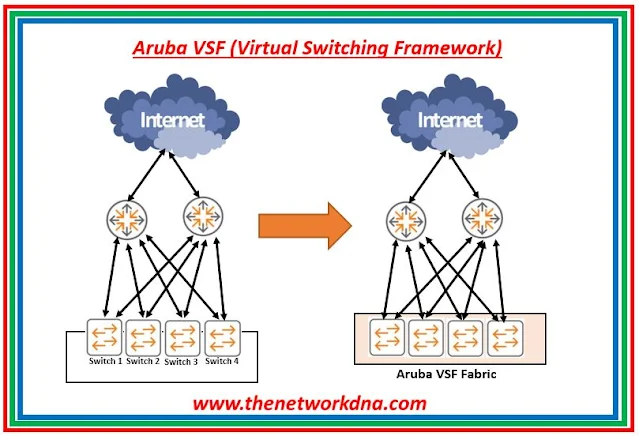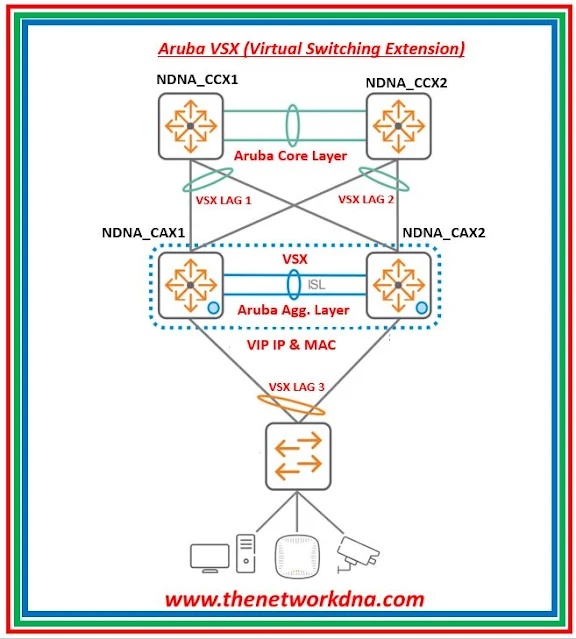A Closer Look: Aruba VSF vs Aruba VSX
A Closer Look: Aruba VSF vs Aruba VSX
VSF and VSX are networking protocols that enable several switches to function as one. However, they do this in quite different ways. Lets talk about both these technologies one by one and also compare these with each other.
💥💥 BLACK FRIDAY DEALS AMAZON" 💥💥
62% off Echo Show 8 (2nd Gen)51% off Beats Studio Pro
61% off Sunzel Flare Yoga Pants
$500 off Peloton Bike+
⚡⚡ What is VSF (Virtual Switching Framework) ? 📜
A technique known as Virtual Switching Framework (VSF) enables compatible switches linked to one another over regular Ethernet connections to function as a single switch. This implies that the switches may be handled as a single device and share the same control, routing, and switching plane.
 |
| Fig 1.1- Aruba VSF |
VSF can lower network complexity and costs, enhance network performance and availability, and simplify network design and operation.
- In the event of a link or device failure, it offers quick convergence and does away with the requirement for Spanning Tree Protocol (STP).
- Through the use of link aggregation groups (LAGs) among the switches, load balancing and bandwidth may be increased.
- Being able to take over traffic while the other switch is being updated or modified permits non-disruptive upgrades and modifications.
- It reduces the number of devices and links to configure and monitor, which can save time and resources.
🚀🚀 What is VSX (Virtual Switching Extension) ? 📜
Aruba VSX is a technology that enables two switches to function as a single logical device, resulting in great performance and availability for business networks.
 |
| Fig 1.2- Aruba VSX |
Aruba VSX stands for Aruba Virtual Switching Extension, and it is supported by Aruba switches running the Aruba OS-CX operating system
- It reduces the number of devices and links to configure and monitor, making network design and maintenance easier.
- It increases network resiliency and availability by removing the requirement for Spanning Tree Protocol (STP) and delivering quick convergence in the event of link or device failures.
- It improves network scalability and flexibility by enabling non-disruptive upgrades and updates, as well as providing multi-chassis link aggregation groups (MC-LAGs) for downstream and upstream devices.
- It improves network speed and efficiency by using both switches in active-active mode and supports load balancing and quality of service (QoS) capabilities.
🔱🔱 Compare Aruba's VSF and VSX ? 📜
Here is a summary of the main differences between VSF and VSX:
- VSF (Virtual Switching Framework) uses a shared control, routing and switching plane across the two chassis, while VSX (Virtual Switching Extension) uses a separated but synched plane where both chassis are active at the same time.
- VSF requires a special connection between the switches, while VSX can use normal ethernet connections.
- VSF functions as one device at both layer 2 and layer 3, while VSX functions as one device at layer 2 and as independent devices at layer 3.
- VSF is more suitable for the access layer where downstream devices usually only have a single uplink to a switch, while VSX is more suitable for the aggregation layer where high resilience downstream/upstream connectivity is required.
- In-depth Analysis: Cisco Switch Stack Vs. Aruba VSF
- Cisco Stacking : All about FlexStack-Plus, FlexStack-Extended ( Fiber and Hybrid)
- Introduction to 1:1 redundancy in Cisco Catalyst 9300 Switches
- Do you know about Cisco StackWise Virtual in Cisco Catalyst 9000 ?
- Part 2: Stackwise Virtual & configurations
- Stack Switching vs Cisco VSS: Where to use
- Difference between VSS vs Local Stacking Vs Horizontal Stacking
- Cisco Switching: Top 10 Questions on StackWise Virtual Technology








